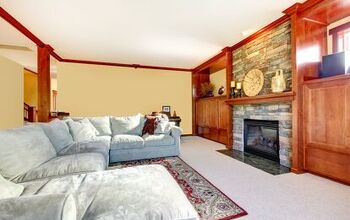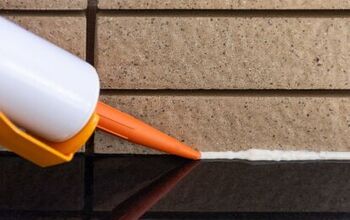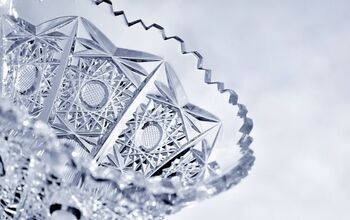Transitioning Your Home Decor: When To Decorate For Each Season

Changing things up in your home with each season brings fresh energy to your space, and it's just fun to do. But knowing exactly when to make those transitions—and how to do it efficiently—can be a challenge. If you’re not careful, you can end up with overflowing storage bins and seasonal decor burn-out before you even make it to May.
Early to mid-March is a good time to decorate for spring. Begin transitioning to summer decor in late May, after Memorial Day. Put up fall decor in early to mid-September, going with earlier if you plan to do something different for Halloween. Create a winter look after Thanksgiving, or between late November and early December.
It's time to make things simple and approach your seasonal style switcheroos with intention and enjoyment. This article breaks down the ideal times to decorate for each season, plus practical tips to make the transitions painless and clutter-free.
Springtime Fresh: Lighten And Brighten The Mood
Best Time To Decorate For Spring: Early To Mid-March
As winter tips its hat and bids you farewell, it's time to greet warmer days and more sunshine. Many people also feel a strong urge to refresh their homes during this time of year (there's a reason we call it spring cleaning).
Spring officially begins around March 20, but you don’t need to wait for the equinox to start adding springtime touches to your home. Begin introducing lighter colors and fresher elements into your home's main living areas in early March to create a welcoming space that invites the upcoming spring season.
Spring Decor Ideas
- Swap out heavy throw blankets and pillows for ones with lighter fabrics, like cotton or linen.
- Introduce fresh florals throughout your home in pretty vases or baskets. Fresh is best, but if you cringe at the thought of keeping plants alive, go with high-quality faux flowers and greenery. Keep them dust-free, and if you would normally see soil, add some to give the illusion of real plants.
- Use pastels in your color palette or pick nature-inspired hues, including soft greens, yellows, blues, and pinks.
- Incorporate natural materials like wicker, bamboo, rattan, or unfinished wood. Layer different options to create an inviting space.
Transition Your Home From Winter To Spring
It's always best to declutter during any decor transition. But it's especially important when you're prepping for spring, since the goal is typically to create a sense of renewal and calm. After all, spring cleaning and decluttering go hand-in-hand.
Decide which of your winter decor items would work equally well for spring. Perhaps you have a pretty collection of white vases or natural wood trays that you can style differently with spring-inspired blooms and other items.
Summer Decor Is Bright And Effortless
Best Time To Decorate For Summer: Late May To Early June
When you think of summertime, you probably (like a lot of people) think of beach getaways, no school, summer vacations, camp, and so on. Summer usually gets a reputation for being a time to kick back, enjoy life, and relax. Of course, this doesn't mean you're sitting at home all day twiddling your thumbs; it's just the overall carefree vibe that summertime tends to stir up.
Therefore, try to match that energy with your summer decor, starting after Memorial Day. As hectic school days wind down, summer decor should start showing up in your home.
Summer Decor Ideas For Your Home
- Mix in bright, saturated colors like coral, turquoise, or sunflower yellow.
- Experiment with beachy or coastal-inspired elements without getting too themey. Think things like driftwood, jars of shells, and nautical stripes.
- Swap out heavy rugs for lighter ones—or remove them entirely for a breezy feel. Alternatively, bring some of your outdoor decor in with a woven, outdoor rug.
- Maximize natural light by switching to sheer curtains or simply tying back or removing heavy drapes.
Transitioning From Spring To Summer Decor
The transition from spring to summer decor can be a bit confusing, but it's really one of the easiest ones to handle. The looks share many qualities, such as natural materials and maximizing natural light.
Therefore, stick to a few basic changes. Maintain a less-is-more approach and cut back on clutter even more to get that carefree, airy vibe. As previously mentioned, blend your outdoor and indoor design elements, and incorporate summertime scents.
A few good examples are coconut, citrus, and ocean-inspired aromas. Use candles, diffusers, wax warmers, or essential oils to fill your house with seasonal fragrances.
Fall Welcomes Cozy Layers And Warm Hues
Best Time To Decorate For Fall: Early To Mid-September
The official start of fall is around September 22, but many people start to crave cozy textures and warm tones as soon as school gets underway. By decorating in early September, you can ease into autumn and enjoy the full season without feeling rushed (especially if you enjoy changing things up mid-fall for Halloween).
Fall Decor Ideas
- Incorporate earthy tones, like rust, mustard, deep greens, and burgundy.
- Evoke a sense of coziness with textured throws and pillows. Use warm, plush fabrics, think knit, velvet, or flannel.
- Decorate with natural elements like pumpkins, gourds, pine cones, and dried wheat or leaves. (This also helps limit your need for seasonal decor storage.)
- Choose warm, spicy scents like cinnamon and clove.
Moving Into Fall Decor
Before you replace everything, decide where you can layer. Layering adds depth and an extra touch of comfort and warmth, perfect for autumn. For example, you might layer a plaid, flannel throw over a rattan chair.
Use items that have a strong, neutral base for fall decor and swap out smaller, more specific elements. For example, a burlap table runner works well throughout the entire fall season instead of getting separate runners for Halloween and Thanksgiving. Maybe you use double-sided pumpkins, plain on one side with a whimsical Jack-o-lantern face on the other.
Add Some Sparkle For Winter Decor
Best Time To Decorate For Winter: Late November To Early December
After Thanksgiving, it's time to sprinkle in the cozy magic of winter. Whether or not you celebrate the holidays, winter decor typically includes more twinkle, texture, and warmth. Although the winter solstice isn't usually until December 20 or 21, it's common for people to roll out the red carpet for wintertime decor much sooner.
Ideas For Winter Decor
- Go with rich colors like forest green, deep red, and navy, and use gold or silver accents.
- Opt for faux fur or heavy knit blankets.
- Use candles, twinkle lights, or glowing lanterns to introduce ambient light and extra sparkle.
- Again, natural decor gets a green light, with things like evergreen branches, pine cones, and boughs of holly (just like the song says).
Winter Decor Transition Tips
Keep holiday decorations separate from your winter decor. Similar to fall decor with Thanksgiving and Halloween, you can decorate for winter without filling your house with Santa-themed everything.
Therefore, maintain a strong winter decor base that lasts through February and enables you to pepper specific holiday decor on top as needed. Easy-to-remove items are perfect for adding the extra whimsy you want for holiday celebrations, whether it's twinkling lights or festive garlands.
Store winter decor in separate containers for more detailed occasions. For example, have a general winter bin, one for Christmas, another for New Year's fun, and even one for Valentine's Day if you're so inclined. (Sheesh, there sure are a lot of things happening in the winter, right?)
General Tips For Seamless Seasonal Decor Transitions
Here are a few extra pointers to keep your seasonal swaps stress-free.
1. Create A Neutral Foundation
Invest in staple items—white or beige pillows, natural wood trays, clear glass vases—that serve as a logical backdrop for all seasons. You can then swap out smaller accents to match the time of year instead of redoing everything every few months.
2. Use Covers
Storing full decorative pillows, rugs, bedding, etc., for every season takes up a lot of space. (Not to mention it's a hassle to deal with.) Instead, buy high-quality inserts, duvets, and rug pads, and just switch out the covers when you want.
Not everyone changes their rugs to match the season, but if you do, go with pads and covers. Washable options are great. (Companies like Ruggable offer various rugs that work with the same rug pad, so you don't have bulky rugs to store.)
3. Label And Store Seasonal Decor Efficiently
Create labeled bins or bags for each season. Store only items you truly use each year and donate the rest. Packing up after each season is the perfect time to cut down clutter.
Try to limit each season’s decor to one or two bins to keep things manageable. Store decor by rotation and use reusable labels to make things easier to swap and limit the number of containers.
For example, one bin might say “Spring to Summer.” As you put out your summer decor, you put the spring decor into the bin, then change the label to “Winter to Spring.”
By the time you're ready to put winter decor away, it would go into this bin, you'd put out the spring stuff, and change the label to “Fall to Winter.” Basically, the label always becomes “the season before to whatever season goes into the box.”
4. Repurpose Items Creatively From Season To Season
You can repurpose some decor pieces easily with seasonal tweaks. A simple white wreath can get fresh florals in the spring, shells in the summer, leaves in the fall, and pine cones in the winter.
5. Plan A Seasonal “Swap Day”
Pick a specific weekend or day at the start of each season that is your decorating day. Set aside time for it so you can enjoy the process and not feel rushed. Involve everyone in the household to turn it into a fun way to prep for a new season and new possibilities.
6. Go Digital With Decor Tracking
Use an app or a notes folder on your phone to track where you store each season’s items and what you own. This helps avoid overbuying during the rest of the year when it's easy to forget what you have (out of sight, out of mind). It also makes future swaps faster.
When To Decorate For Each Season At A Glance
| Season | When to Decorate |
| Spring | Early to mid-March |
| Summer | Late May to early June |
| Fall | Early to mid-September |
| Winter | Late November to early December |
Decorating your home for each season doesn't have to be overwhelming or time-consuming. And it shouldn't feel like a chore. By sticking to a simple schedule, using these easy transition tips, and keeping your decor minimal and intentional, you’ll enjoy a home that feels fresh and inviting all year long.
Related Guides:
- 14 Creative Ways To Store Your Holiday Decorations
- Tips For Packaging And Storing Holiday Leftovers
- A Beginner's Guide To Home Design

Stacy Randall is a wife, mother, and freelance writer from NOLA that has always had a love for DIY projects, home organization, and making spaces beautiful. Together with her husband, she has been spending the last several years lovingly renovating her grandparent's former home, making it their own and learning a lot about life along the way.
More by Stacy Randall



























